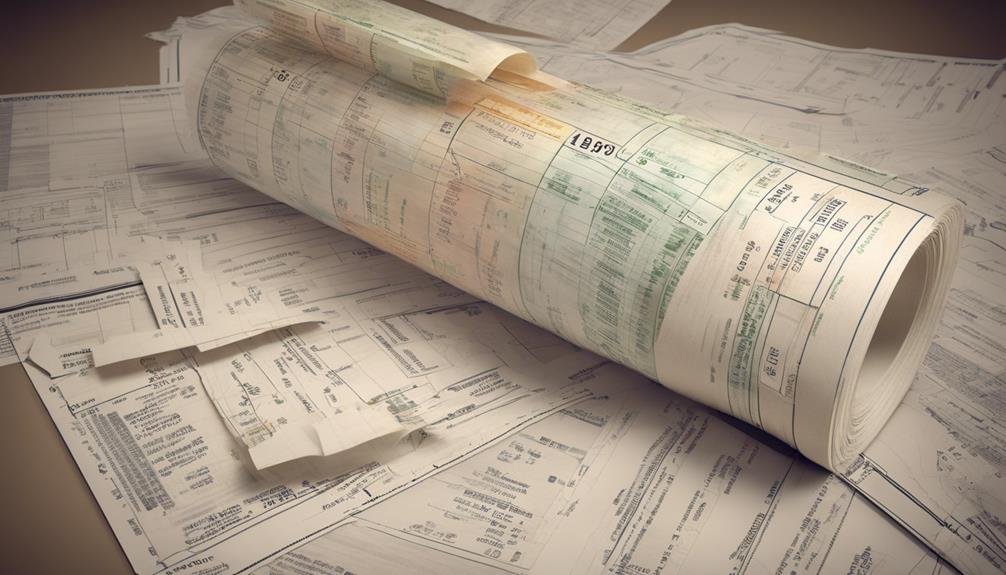Understanding American Depositary Receipts (ADRs): Types, Pricing, Fees, Taxes
As investors navigate the intricacies of international markets, American Depositary Receipts (ADRs) offer a pathway to diversification beyond domestic borders. The classification into Sponsored and Unsponsored ADRs sets the stage for understanding the complexities that accompany these investment instruments. Pricing, fees, and tax implications all hold pivotal importance in the domain of ADRs, shaping the landscape for potential returns on investment. Exploring the nuances within each category can shed light on the advantages, disadvantages, and risks associated with ADR investing, providing a holistic view for astute investors seeking to expand their global portfolio.
Key Takeaways
- ADRs categorized into sponsored and unsponsored types with differing regulatory compliance.
- Factors like currency conversion and market correlation influence ADR pricing.
- Fee structure includes custody fees, conversion expenses, and foreign taxes impacting returns.
- Foreign taxation on dividends withheld, American investors may seek IRS credits to avoid double taxation.
- ADRs offer liquidity, diversification, and reduced currency risks, but are subject to currency and regulatory risks.
Types of ADRs
Serving as a pivotal distinction within the American Depositary Receipt (ADR) landscape, these financial instruments are categorized into two primary types: Sponsored and Unsponsored ADRs. Sponsored ADRs involve a legal arrangement between a U.S. bank and a foreign company, ensuring compliance with SEC regulations and listing on major U.S. exchanges.
On the other hand, Unsponsored ADRs lack direct participation from the foreign company and may not adhere to the same regulatory standards. Additionally, ADRs are classified into three levels based on U.S. market access, with Level I having the lowest requirements and Level III offering the most extensive market access.
Understanding the differences between Sponsored and Unsponsored ADRs is essential for investors seeking various levels of market exposure and regulatory compliance.
Pricing Dynamics
The pricing dynamics of American Depositary Receipts (ADRs) play a critical role in determining the value proposition for investors looking to engage in cross-border equity investments.
ADR pricing is influenced by factors such as currency conversion and market correlation. Currency conversion impacts the value of ADRs as dividends and capital gains are received in U.S. dollars, net of conversion expenses and foreign taxes.
Additionally, market correlation between the ADR price and the company's stock price on its home exchange is essential for investors to monitor. Understanding how these dynamics affect ADR pricing can help investors make informed decisions when considering cross-border investments, ensuring they account for potential fluctuations in value due to currency movements and market trends.
Fee Structure Overview
An examination of the fee structure associated with American Depositary Receipts (ADRs) reveals the financial implications for investors engaging in cross-border equity transactions. When considering ADR investments, investors must compare various fees such as custody fees, conversion expenses, and foreign taxes. These fees can vary between ADR programs and can impact the overall return on investment.
Regulatory implications also play a significant role in fee structures, as compliance requirements may influence the total costs incurred by investors. From an investor perspective, understanding the fee structure is essential to assess the true cost of ADR ownership. Additionally, currency risks need to be considered, as fluctuations can affect the value of dividends and capital gains received in U.S. dollars.
Tax Considerations
Moving from understanding the fee structure of American Depositary Receipts (ADRs) to examining Tax Considerations reveals the significant impact of tax implications on investors engaging in cross-border equity transactions.
Foreign taxation plays an essential role in the overall tax considerations for ADR holders. Dividend payments from ADRs are subject to foreign taxes, which are typically withheld by the bank managing the ADR. However, American investors may seek relief through IRS credits to avoid double taxation on these dividends.
Understanding the tax implications of investing in ADRs is vital to effectively manage one's investment portfolio and maximize returns while dealing with the complexities of cross-border taxation.
Advantages and Disadvantages
Analyzing the benefits and drawbacks of American Depositary Receipts (ADRs) provides investors with valuable insights into the intricacies of cross-border equity transactions.
Advantages:
- ADRs trade like stocks on U.S. exchanges, offering liquidity and ease of trading.
- Easy access to foreign markets through American brokers, simplifying international investment.
- Denominated in U.S. dollars, reducing currency exchange risks for U.S. investors.
- ADRs enable portfolio diversification by providing exposure to foreign companies.
Potential drawbacks and investment strategies should be carefully considered when incorporating ADRs into an investment portfolio. Understanding the advantages and disadvantages can help investors make informed decisions and develop effective investment strategies.
Risks to Watch Out For
When considering American Depositary Receipts (ADRs) as an investment option, it is imperative to carefully assess the various risks associated with these cross-border equity instruments. Two critical risks to watch out for are currency fluctuations and regulatory changes. Currency fluctuations can have a substantial impact on the value of ADRs, as changes in exchange rates directly affect returns for investors. Additionally, regulatory changes in the foreign country where the underlying stock is traded can affect the performance of ADRs, leading to uncertainties and potential losses. It is essential for investors to stay informed about these risks and consider them when making investment decisions.
| Risks to Watch Out For | |
|---|---|
| Currency Fluctuations | Impact ADR value |
| Regulatory Changes | Influence ADR performance |
Historical Perspective and Examples
An examination of the historical evolution of American Depositary Receipts (ADRs) sheds light on their significance in facilitating cross-border investment opportunities for American investors.
- ADRs were introduced in the 1920s to enable U.S. investors to purchase foreign shares.
- J.P. Morgan's predecessor was a pioneer in developing the ADR concept.
- Volkswagen AG traded as a sponsored ADR until 2018, providing investors with exposure to the German automaker's stock.
- ADR investing strategies involve researching foreign companies' financials and market position before making investment decisions.
Conclusion
To sum up, American Depositary Receipts (ADRs) offer investors a diversified opportunity to access international markets. Understanding the types, pricing dynamics, fee structures, and tax considerations of ADRs is essential for making informed investment decisions.
Despite the risks involved, ADRs present advantages such as increased liquidity and access to foreign markets. By carefully considering these factors, investors can navigate the complexities of cross-border investments effectively.







